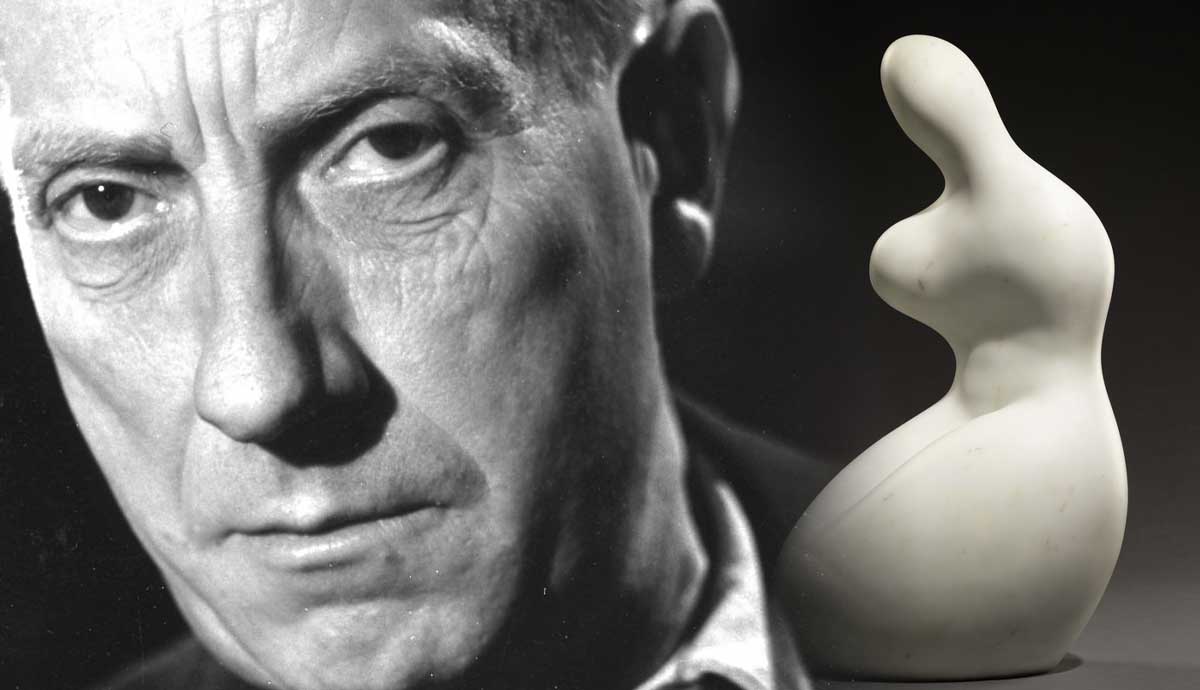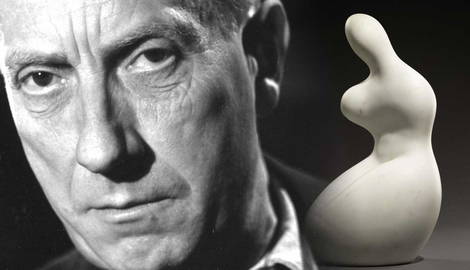
Breaking barriers by exploring his subconscious mind, he helped change the art world forever and was a bridge to abstract modern art in ways we take for granted today.
To learn more about the prolific and unconventional artist, here are four fascinating facts about Arp.
Arp moved from Strasbourg to Paris to Zurich in the early 1900s.

Born in Strasbourg in 1886, he studied at the Ecole des Arts et Metiers there as a young man. He eventually moved to Paris after various visits and attended the Academie Julian in 1908.
Afterward, he moved to Switzerland but was often traveling throughout Europe where he mixed and mingled with those who’d become the art masters of the 20th century including Guillaume Apollinaire, Max Jacob, Amadeo Modigliani, and Pablo Picasso.
In 1915, he was based in Zurich as World War I was raging. There, he created collages and tapestries. Soon afterward, the Dada movement was alive and well with the Cabaret Voltaire opening in 1916, functioning as the group’s hub.

Arp is one of the founders of Dada and was a major player in Surrealism.
Dadaism is an art movement characterized by being “un-characterizable.” It was the precursor to Surrealism and came out of the horrific realities of World War I. No one could wrap their heads around the atrocities that occurred in the trenches and Dada art reflected the same nonsensical attitude.

Arp was one of its founders in Zurich and brought the movement with him when he moved to Cologne in 1919 along with Max Ernst and Alfred Grunwald. In 1922, Arp exhibited his work in the Kongress der Konstructivisten in Weimer and the Exposition Internationale Dada in Paris.
However, over the next few years, Arp moved onto Surrealism and contributed to surrealist magazines like Merz, Mecano, De Stijl, and La Revolution surrealiste. In 1925, Arp’s art appeared in the first-ever Surrealist exhibition at the Galerie Pierre in Paris.

Surrealism, as opposed to Dadaism, is a bit more structured in terms of a definition. It sprung up around the same time Sigmund Freud was publishing his controversial ideas about psychology and the subconscious.
At the time, the idea that we even had a subconscious was new and Surrealist artists experimented with expressing their hidden agendas and desires.
Arp pretended to be mentally ill to avoid the German draft.
For many young people coming of age in the early 20th century, World War I shook them to the core. More than 16 million people died, making it one of the deadliest conflicts humankind has ever known. So, to avoid serving, Arp convinced the German consulate he was mentally ill.
He was told to write his date of birth on the blank line when filling out paperwork. So, he filled in every single blank line available on the paper with his date of birth, completing an arbitrary calculation of adding all the numbers on the page with the answer on the bottom of the form.
The recruiters believed him and he never served in the war. Still, World War I went on to influence him in many ways since, as we’ve seen, Dadaism was a massive movement in reaction to the war and the reason he ended up in Zurich in the first place was due to its political neutrality.
Arp was the first to use chance as a means to produce art.
As modern art lovers, it’s easy to take for granted the idea of randomness making art. At this point, we’re used to the idea of paint splatter and the centrifugal force being used to create art and it’s perfectly logical to us now.

But before the 20th century, art was about calculated techniques and purposeful execution. Arp was the first to be interested in the random nature of things and how chance could be his collaborator in art creation.
This means he’d make collages by letting objects fall on the canvas wherever they may and using the randomness of the universe to facilitate his artistic pieces. No one was experimenting with these ideas before Arp and the Surrealists, even though now they seem obvious and perhaps not so monumental. Just know, this was monumental.

Another new and interesting aspect Arp explored was naming his pieces after their completion. This is yet another bit of modern art we might take for granted in this day and age. However, in Arp’s time, this was unprecedented.
Before the 1900s, the subject of art was chosen and often named first. Think “portrait of so-and-so” or “countryside lane in Bristol” for example. Then, artists would paint or sculpt or draw the subject that they intended to create.
Arp, on the other hand, formed his work first, doing his best to bring out his subconscious ideas while minimizing the activation of his conscious mind. Then, once complete, he’d give it a name based on whatever came out.

Arp died in 1966 but worked until quite late in life. Much of his art is still shown at the Museum of Modern and Contemporary Art in Strasbourg and his legacy lives on with various foundations and research centers in his name throughout Europe.

Overall, his against-the-grain style and experimentation with the subconscious make Arp one of the masters of Surrealism and forefathers of abstract art as we know it today.







